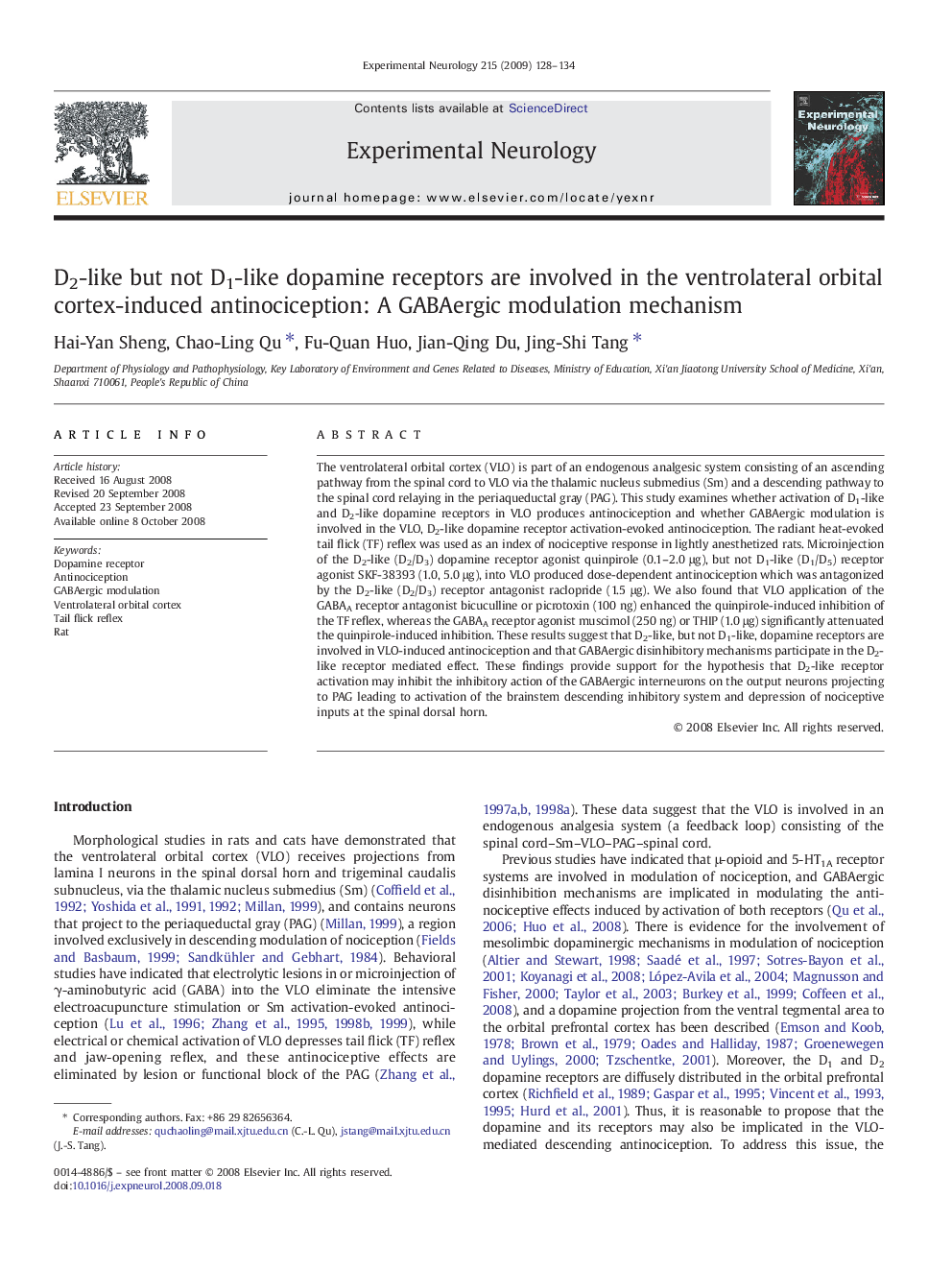| Article ID | Journal | Published Year | Pages | File Type |
|---|---|---|---|---|
| 3056395 | Experimental Neurology | 2009 | 7 Pages |
The ventrolateral orbital cortex (VLO) is part of an endogenous analgesic system consisting of an ascending pathway from the spinal cord to VLO via the thalamic nucleus submedius (Sm) and a descending pathway to the spinal cord relaying in the periaqueductal gray (PAG). This study examines whether activation of D1-like and D2-like dopamine receptors in VLO produces antinociception and whether GABAergic modulation is involved in the VLO, D2-like dopamine receptor activation-evoked antinociception. The radiant heat-evoked tail flick (TF) reflex was used as an index of nociceptive response in lightly anesthetized rats. Microinjection of the D2-like (D2/D3) dopamine receptor agonist quinpirole (0.1–2.0 μg), but not D1-like (D1/D5) receptor agonist SKF-38393 (1.0, 5.0 μg), into VLO produced dose-dependent antinociception which was antagonized by the D2-like (D2/D3) receptor antagonist raclopride (1.5 μg). We also found that VLO application of the GABAA receptor antagonist bicuculline or picrotoxin (100 ng) enhanced the quinpirole-induced inhibition of the TF reflex, whereas the GABAA receptor agonist muscimol (250 ng) or THIP (1.0 μg) significantly attenuated the quinpirole-induced inhibition. These results suggest that D2-like, but not D1-like, dopamine receptors are involved in VLO-induced antinociception and that GABAergic disinhibitory mechanisms participate in the D2-like receptor mediated effect. These findings provide support for the hypothesis that D2-like receptor activation may inhibit the inhibitory action of the GABAergic interneurons on the output neurons projecting to PAG leading to activation of the brainstem descending inhibitory system and depression of nociceptive inputs at the spinal dorsal horn.
